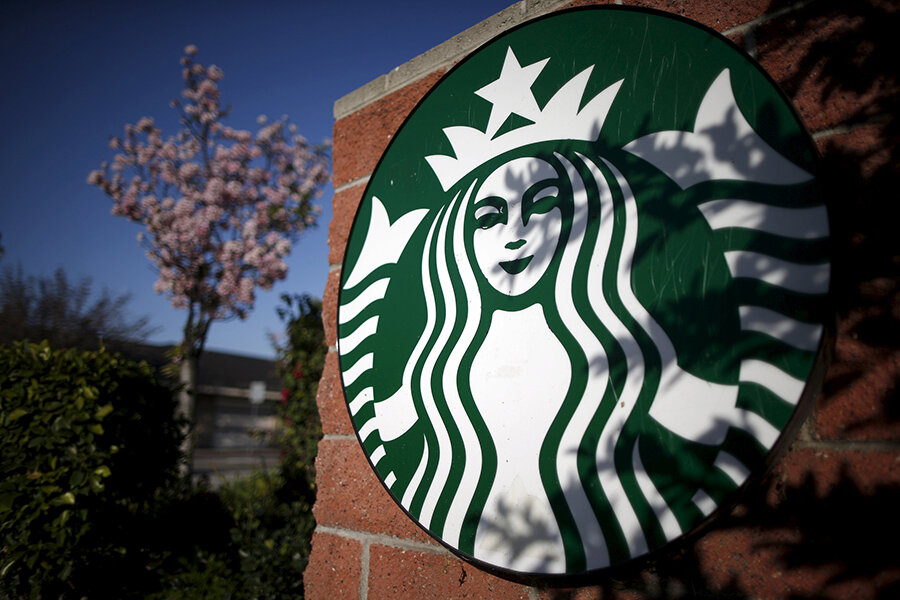Starbucks raises prices – again. Why customers will still drink up.
Loading...
Starbucks, already one of the nation's priciest coffee chains, is hiking prices again – and by all indications, most customers will not be fazed.
Starting Tuesday, prices for some Starbucks coffee drinks will increase by 5 to 20 cents, the Seattle-based company announced Monday, making customers' regular coffee fix a bit more expensive.
For example, tall (12 oz) and venti (20 oz) cups of brewed coffee – that's small and large in Starbucks' speak – will cost 10 cents more each in most US markets. For most customers, that translates to a 1 percent increase in the average receipt, says Starbucks.
The news comes as coffee prices have dropped, and other coffee sellers – like J.M. Smucker Co., which makes Folgers and Dunkin' Donuts brand coffees – have said they would cut prices.
It also comes on the heels of another widely-covered Starbucks price hike last year.
So why, when it recently raised prices and the competition is cutting theirs, is Starbucks hiking prices again?
“The reason Starbucks can raise prices is because they have a good strong brand. Part of having a strong brand is that you can raise prices and people will accept it," says Michael Levin, a professor of marketing at Otterbein University in Westerville, OH.
Indeed, Starbucks is one of the most powerful brands in the country, the Sauvignon Blanc of coffee. It has successfully made a basic commodity a luxury, a regular indulgence that customers are happy to treat themselves to, even at $4 per cup.
The secret lies in the Starbucks experience, says Levin.
"What you are paying for is not the coffee, but rather the experience that Starbucks offers. Nowhere else will you get the barista who remembers your order, that smell you get when you open the doors or even the light jazz or ambiance you get from a Starbucks."
That's why a recent survey revealed that Starbucks is the most popular first date destination in the US. Unlike, say, McDonald's or Dunkin' Donuts, both of which also offer coffee drinks, at lower prices, Starbucks offers trendy music, free Wi-Fi, and comfy couches that encourage customers to lounge for hours.
And Starbucks has also built a loyal customer base by consistently serving a quality product, says Karen Mishra, professor of marketing at Meredith College School of Business.
"Starbucks will be able to get away with raising prices for its loyal customers who appreciate the quality drink that they get week after week," she says. "As a loyal Starbucks customers myself, I appreciate that my favorite drink, a grande mocha ... tastes exactly the same in Chapel Hill, N.C., or in Kiawah Island, S.C."
For people like Mishra, and thousands of other Starbucks customers, the pricey coffee shop is part of a routine. And when something becomes part of our routine, price becomes secondary, says Levin.
"[I]t’s hard to break a routine – many of the fast casual outlets have tried. If you look at the price increase from Starbucks, it is minimal and within the psychologically acceptable range."
In other words, Starbucks in raising prices because they can. When a hot day demands a refreshing venti iced mocha with extra whip, most customers will be happy to fork over an extra nickel or two.






